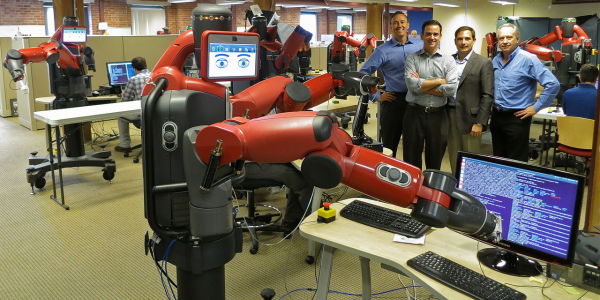Think about what it’s like to work with a coworker. You work alongside a coworker, knowing that they will do their task and you will do yours. You can collaborate with a coworker. You might help him, he might help you, or the two of you might work on a project together. You don’t constantly check up on a coworker to make sure they’re doing all of their work properly. You don’t give them instructions and track their efficiency as they do their jobs. A coworker is valuable and can make contributions independent of other workers.
The robots in factories right now are more like tools than like coworkers. Yes, manufacturing robots do a lot of work that benefits a plant, but their automation depends on operators and technicians. Today’s factory robots aren’t capable of making the same independent contributions as a coworker. But what if that were to change?
Imagine cobots, or collaborative robots, or robotic coworkers. Rather than being given mindless and repetitive tasks, a cobot would be programmed to perform a variety of tasks that could aid human workers in a shared workspace. Factory workers wouldn’t press the go button on a robot and use it as a tool; the robot would instead aid the worker in carrying out jobs, or vice versa.
Cobots might sound like a manufacturer’s far-off pipedream, but the technology is already here. Robots like Baxter are being introduced into plants to work alongside human workers. Collaborative robots have the advantage of being more affordable than big manufacturing robots, and unlike big robotic arms, collaborative robots are safe enough to interact with humans.
Collaborative robots won’t replace big manufacturing robots, or even human workers. They will be additional robots that increase the efficiency and capabilities of human workers. With where the technology is at right now, it won’t be long before robotic coworkers are commonplace!



